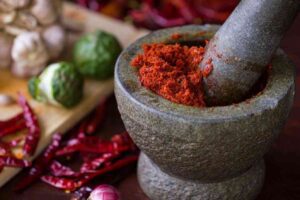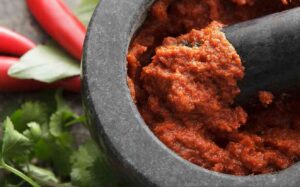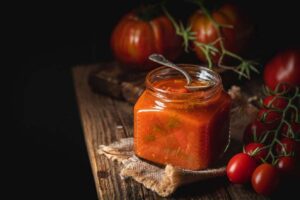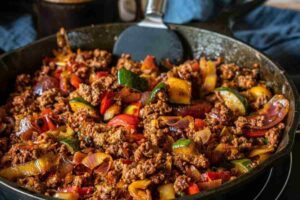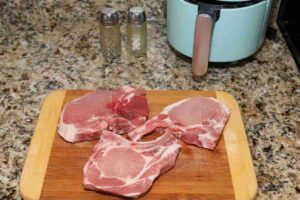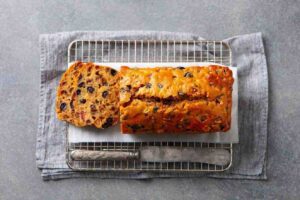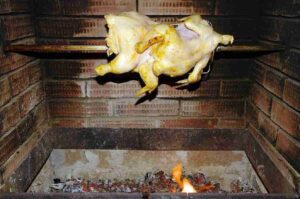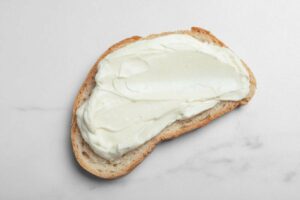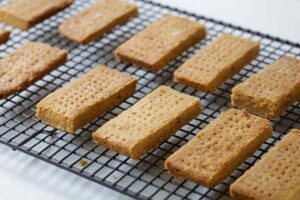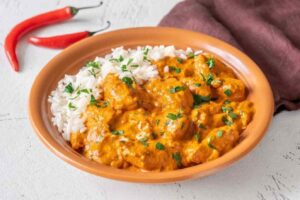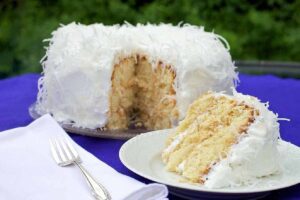Introducing the secret ingredient that can elevate your culinary creations to new heights: Baking & cooking Pastes! These versatile, flavor-packed concoctions are the unsung heroes of the kitchen, capable of turning ordinary dishes into extraordinary masterpieces.
Whether you’re an aspiring home chef or a seasoned professional, the world of pastes offers a tempting array of flavors and possibilities, allowing you to experiment, innovate, and delight your taste buds like never before. In this culinary journey, we will explore the fascinating world of it, uncovering its rich history, diverse flavors, and incredible potential to transform your dishes into gourmet sensations.
Get ready to embark on a flavor-filled adventure that will leave your senses tingling and your taste buds begging for more. Let’s delve into the magic of pastes and unlock the secrets of memorable flavors in your culinary creations!

Baking & Cooking Pastes
Equipment
- Measuring Spoons and Cups
- Mixing Bowls
- Food Processor
- Blender
- Mortar and Pestle
- Whisk
- Rubber Spatula
- Knife
- Cooking Pot
- Strainer or Sieve
- Oven
- Baking Sheets and Pans
- Pastry Brush
- Thermometer
Ingredients
- 1 Herbs and Spices
- 1 Oil or Fat
- 1 Acidic
- 1 Sweeteners
- 1 Nuts and Seeds
- 1 Dairy Alternatives
- 1 Salt and Pepper
- 1 Aromatics
- 1 Umami-Boosters
- 1 Tomato Paste
- 1 Stock or Broth
- 1 Fruit
Instructions
- Preheat oven to 350°F (175°C).
- Mix dry and wet ingredients separately.
- Combine both mixtures and stir well.
- Bake for 30 minutes, then enjoy!
Video
Notes
Types of baking & cooking pastes
Baking & cooking pastes are versatile ingredients that can be used to add flavor, texture, and complexity to a wide range of dishes. Here are some common types of baking and cooking pastes:
Pesto Paste
Pesto is a classic Italian sauce crafted from basil, pine nuts, garlic, Parmesan cheese, and olive oil. Pesto paste may be used as a sauce for pasta, an expansion for sandwiches, or a flavoring for numerous dishes.
Curry Paste
Curry pastes are the base for plenty of Asian and Indian curry dishes. They may be usually made by way of grinding collectively a combination of spices, herbs, and on occasion aromatics like ginger and garlic. Common kinds encompass crimson curry paste, green curry paste, and yellow curry paste.
Tomato Paste
Tomato paste is a concentrated form of tomatoes that may be used to add intensity and richness to Cantonese sauces, soups, and stews. It is made by cooking down tomatoes and reducing them to a thick paste.

The benefits of using baking & cooking pastes in recipes
baking & cooking pastes are flexible elements that could add flavor, moisture, and texture to a huge range of recipes. They offer several advantages whilst included in cooking and baking:
Flavor Enhancement
Pastes like garlic paste, ginger paste, or chili paste are concentrated sources of taste. They can raise the flavor of your dishes by supplying a greater extreme or even distribution in their respective flavors, in comparison to the usage of fresh components.
Convenience
Using pastes can save you time and effort in the kitchen. They take away the want for peeling, chopping, or grating components like garlic, ginger, or chilies. This is mainly useful whilst you’re in a hurry or cooking large quantities.
Consistency
Cooking pastes offers consistency in taste and texture. On account that they may be pre-prepared and frequently processed to an easy consistency, you could reap a uniform flavor and texture at some stage in your dish, making sure that it seems as anticipated each time.
Reduced Food Waste
By way of the use of pastes, you can reduce food waste due to the fact you do not have to fear unused quantities of fresh components going horrific. You can use simply the amount you want and keep the rest for destiny use.
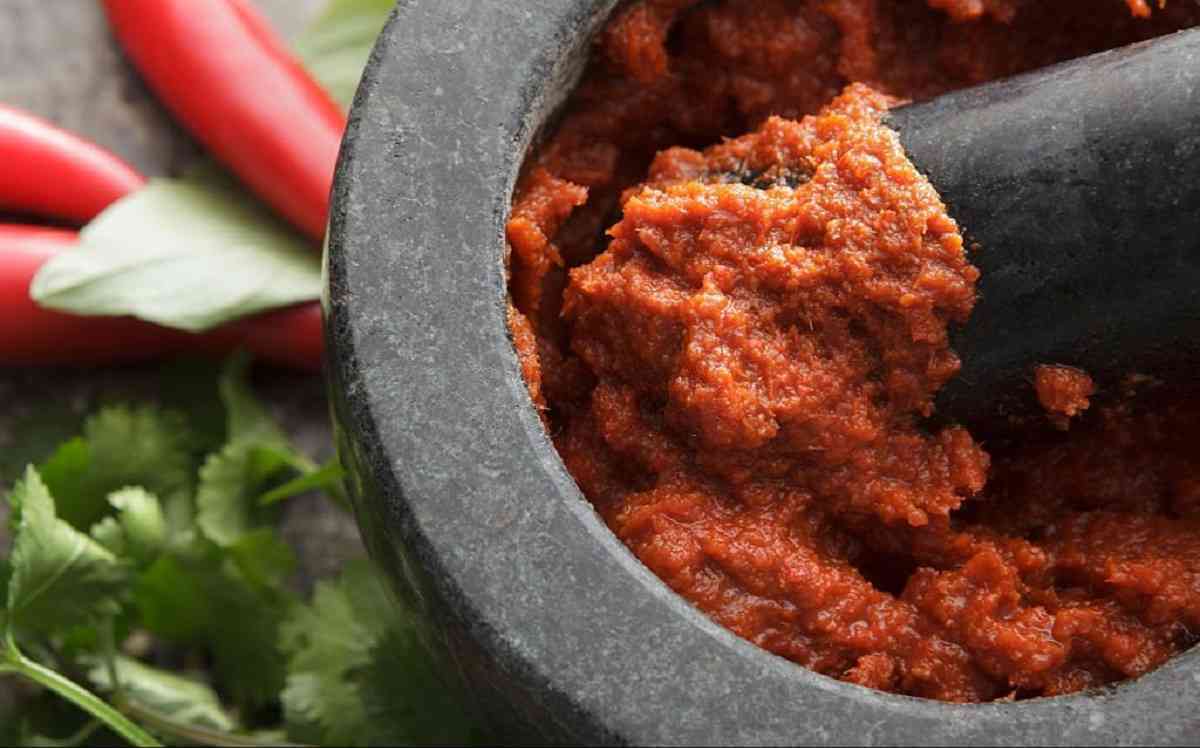
Including baking and cooking pastes in different cuisines
Baking and cooking pastes are very versatile and can be used in a wide range of cuisines. Whether you’re cooking Italian, Mexican, or Asian dishes, there’s a paste that can add an extra layer of flavor.
For Italian cuisine, tomato and herb pasta are excellent choices for enhancing the taste of pasta sauces, pizzas, and bruschetta. In Mexican cuisine, chili and garlic pastes can spice up salsas, enchiladas, and tacos. In Asian cuisine, ginger, curry, and miso pastes are essential for creating authentic flavors in stir-fries, soups, and marinades.
To incorporate pastes into your recipes, start by adding a small amount and tasting as you go. Remember that pastes are concentrated, so
a little goes a long way. Gradually increase the amount until you achieve the desired flavor. Don’t be afraid to experiment and get creative with your dishes. The possibilities are endless!
How long can you keep cooked paste baked in the fridge?
How do I use baking & cooking pastes in my recipes?
How do I use baking & cooking pastes?
Baking and cooking paste recipes for beginners
If you’re new to using pastes, here are a few simple and beginner-friendly recipes to get you started:
1. Curry Chicken
In a pan, heat oil and sauté onions until soft. Add curry paste and cook for a minute. Add chicken pieces and cook until browned. Pour in coconut milk and simmer until chicken is cooked through. Serve with rice or naan bread.
2. Tomato Pasta Sauce
In a saucepan, heat olive oil and sauté garlic until fragrant. Add tomato paste, canned tomatoes, and herbs. Simmer for 20 minutes, stirring occasionally. Season with salt and pepper. Toss with cooked pasta and sprinkle with grated cheese.
3. Ginger Stir-Fry
In a wok, heat sesame oil and stir-fry your choice of vegetables. Add ginger paste, soy sauce, and a splash of water. Continue stir-frying until vegetables are cooked but still crisp. Serve over steamed rice or noodles.

Tips for storing and using baking and cooking pastes
To ensure the long life and quality of your pastes, it’s important to store them properly. Most pastes come in resealable containers, which should be tightly sealed after each use. Store them in a cool, dry place away from direct sunlight.
When using baking & cooking pastes, always use clean utensils to prevent cross-impurity. Avoid using wet spoons or fingers directly in the container, as moisture can promote the growth of bacteria. Instead, scoop out the desired amount and transfer it to a separate bowl or plate.


